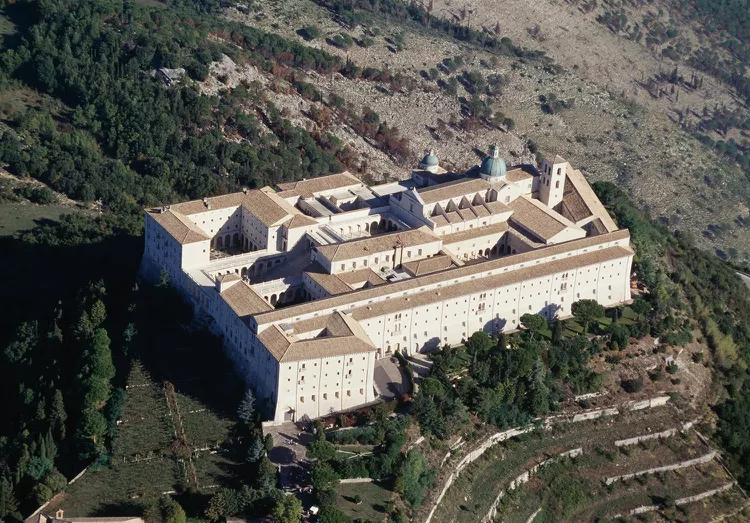Summary of Historic WWII Sites in Italy
Italy boasts numerous historic monuments, battlegrounds, and museums linked to World War II. Many of these sites are situated in beautiful locations that contrast sharply with the tragic history of the conflict. Here are some notable places to explore.
Abbey of Montecassino
One of the most sought-after sites is the reconstructed Abbey of Montecassino, a landmark of significant historical importance during World War II and one of Europe’s oldest monasteries. It is strategically perched on a mountaintop between Rome and Naples, offering breathtaking views and a deeply enriching exploration experience. Therefore, it is recommended to allocate at least a couple of hours to fully appreciate its offerings.
Additionally, there is a small War Museum located in the town of Cassino, beneath Montecassino, along with the Anzio Beachhead Museum, situated in the heart of Anzio close to the train station.
Cassino and Florence American Cemeteries
Throughout both World War I and II, countless Americans lost their lives in battles across Europe. Italy is home to two prominent American cemeteries that are open for visitation. The Sicily-Rome Cemetery, located in Nettuno south of Rome (see southern Lazio map), hosts 7,861 graves of American soldiers and 3,095 names of the missing inscribed on the chapel walls. Nettuno can be reached via train, followed by a short walk or taxi ride. The Museum of the Landing is also found in Nettuno.
The Florence American Cemetery is situated on the Via Cassia just south of Florence, easily accessible by bus with a stop near its entrance. More than 4,000 identified soldiers are buried here, along with a memorial for missing soldiers that includes 1,409 names. Both cemeteries feature visiting hours daily from 9 AM to 5 PM and are closed on December 25 and January 1. A staff member is available in the visitor building to assist relatives in locating grave sites.
Mausoleum of the 40 Martyrs
The modern memorial chapel and garden, known as the “Mausoleo dei 40 Martiri” in Italian, is located in Gubbio, in the Umbria region. This site commemorates the atrocity where 40 Italian villagers were executed by retreating German troops on June 22, 1944.
The victims ranged in age from 17 to 61, and their bodies were interred in a mass grave. Despite extensive investigations over the years, authorities have yet to bring those responsible to justice, as all implicated German officers had passed away by 2001. The striking white mausoleum features marble plaques honoring each individual, with some including photographs. The surrounding garden incorporates a wall marking the location where the martyrs lost their lives and safeguards the original mass grave site, with forty cypresses lining the pathway to the monument.
Annual remembrance events take place each June. The mausoleum is open to visitors year-round.
Tempio Della Fraternità di Cella
The Temple of Fraternity at Cella is a Roman Catholic sanctuary situated in Varzi, Lombardy. Constructed in the 1950s by Don Adamo Accosa, it utilizes fragments from churches worldwide that were destroyed during the war. His efforts were initially supported by Bishop Angelo Roncalli, who later became Pope John XXIII, and who contributed the first stone from a church near Coutances, Normandy.
Materials for the sanctuary include a baptismal font sourced from the turret of the naval battleship Andrea Doria and a pulpit crafted from parts of two British ships that participated in the Normandy landing. Stones from major conflict sites — such as Berlin, London, Dresden, Warsaw, Montecassino, El Alamein, Hiroshima, and Nagasaki — were also used in its creation.
A Travel Guide Recommendation
For those wishing to explore these significant historical sites further, the travel guide A Travel Guide to World War II Sites in Italy serves as an excellent companion. This resource includes visitor information for numerous sites, including directions, hours of operation, and notable attractions, featuring maps and historical photographs taken in Italy during the war.





